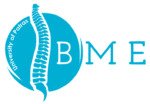| Code | EA7 |
| Type | Elective |
| Semester | A |
| ECTS credits | 5 |
| Teaching Staff |
Course description
In this module, we will treat the brain as an information-processing machine and will learn how to extract information from complex, noisy, high-dimensional neural data. This module will :
a) cover basic neuroscience concepts in order to familiarize students with the latest research developments in the neural underpinnings of sensory, motor and cognitive processes in the human brain. Examples of topics include motor coordination, multisensory processing, decision-making, object recognition, active sensing.
b) outline the types of neural signals that can be measured and analysed to answer neuroscientific questions
c) explain computational techniques used for the analysis and modeling of the above recordings to uncover the underlying neural mechanisms
d) present how the extracted information can be used in practical applications, such as brain machine interfaces, neural prostheses and human-like robotic devices.
Methodologies to be covered include: a) unsupervised learning methods (principal/independent component analysis, non-negative matrix factorization, tensor decompositions, clustering) with applications to human motor control (electromyography[EMG] and kinematic signals), b) supervised learning methods (linear and non-linear classification and regression, non-parametric techniques, regularization) with applications to decoding brain (electroncephalography [EEG]) signals, c) detection and estimation theory (bayesian approaches, maximum likelihood, discrimination measures) with applications to behavioural measurements (accuracy, response time etc.), d) information theory (entropy, mutual information, bias correction for estimation from limited samples) with applications to neural coding using spike trains, e) statistical significance tests (cross-validation, bootstrap, permutation) for all the above applications, f) multimodal data fusion (e.g. simultaneous EEG/fMRI and EMG/Kinematics) and g) task-space information extraction (e.g. source estimation and signal demixing).
Students will have the opportunity to read relevant papers and present them in the classroom. This will be followed by Q&A and open discussion sessions. Through a final class project, the students will also have the opportunity to tackle a large, interesting problem and gain hands-on experience with real-life datasets.
